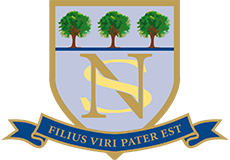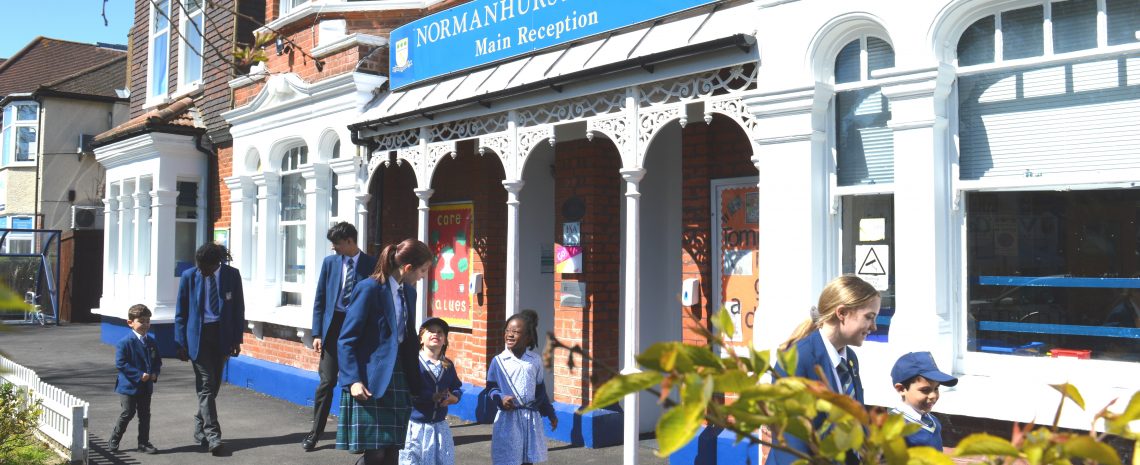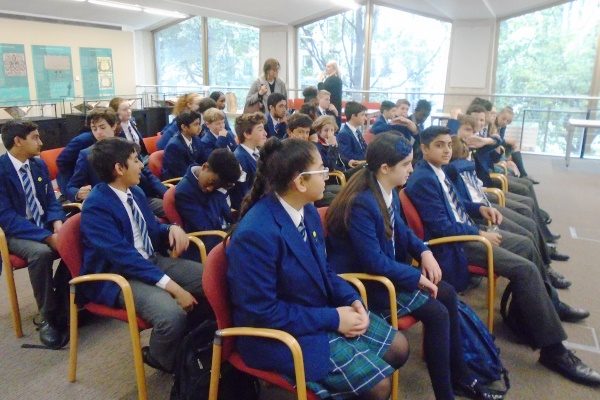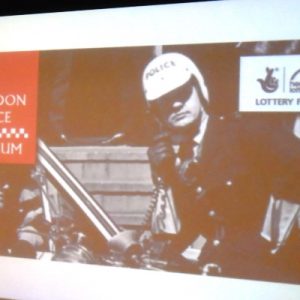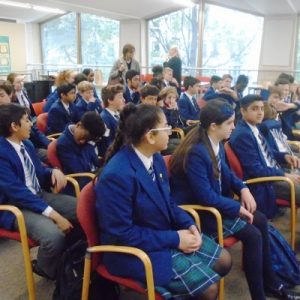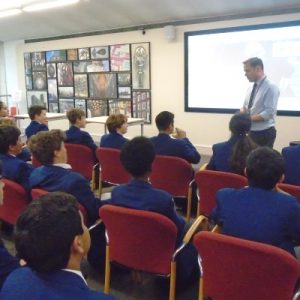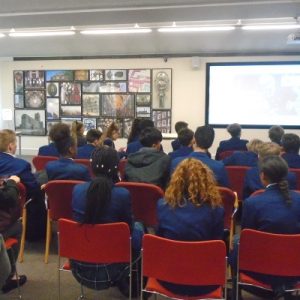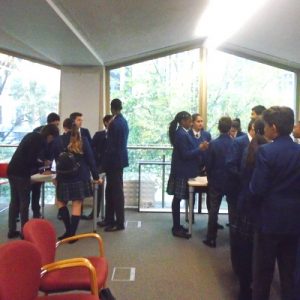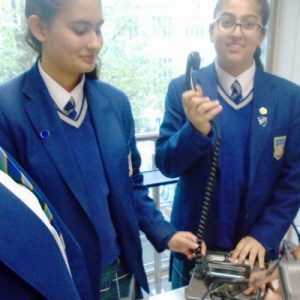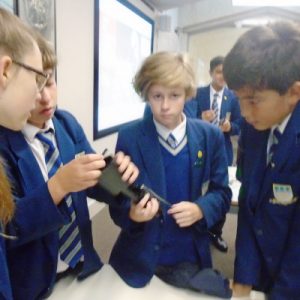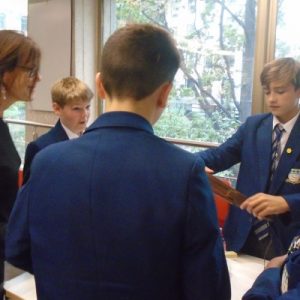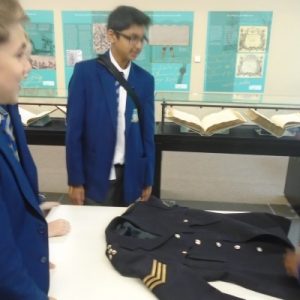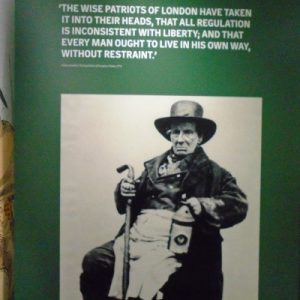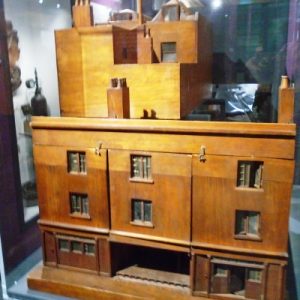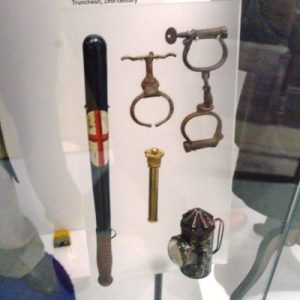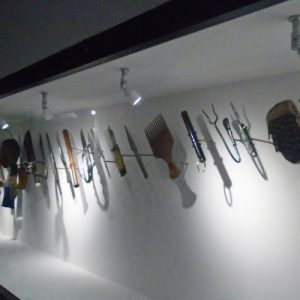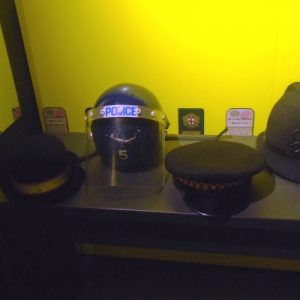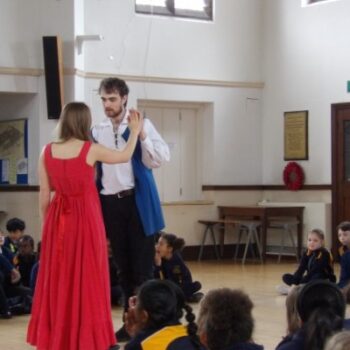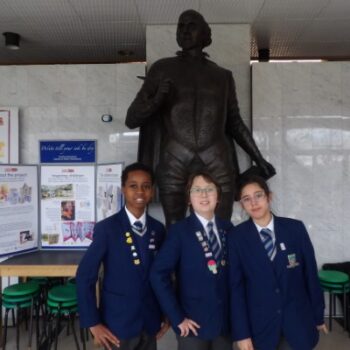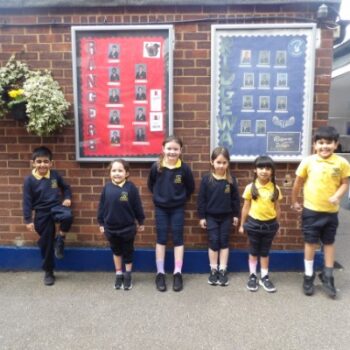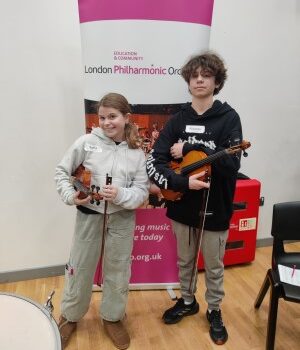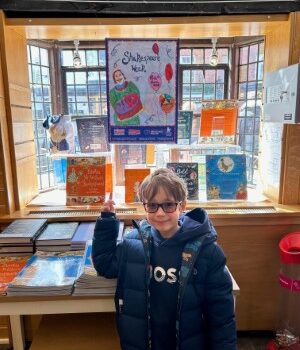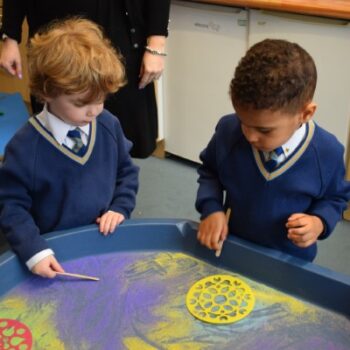Handling historical police artefacts proved to be the most popular aspect of the Year 9 trip to the City of London Police Museum. Lucy (9T) found the heavy two-way telephone radio used by police motor cyclists particularly interesting. Pupils also handled a rattle previously used to attract attention and a fraudulent £5 note from 1982. Tackling fraud, surveillance, hacking, terrorism and cyber-crime have become the main workload for the City of London Police since 1973. This is because, although the area covered is just one square mile, it is the base for many banks and insurance companies and is flooded by nearly 500,000 people who arrive there every day for work.
Year 9 learned that the City of London police was founded in 1839, just one year before the Metropolitan Police. Before that, crime was handled by various assorted groups such as the Bow Street Runners, Watchmen and Aldermen.
Other historic artefacts examined by Year 9 included jars of bullet fragments from 1910 taken from the scenes of the Houndsditch murders and siege of Sydney Street. They also read about one of Jack the Ripper’s victims called Catherine Eddowes, and saw an incendiary device from the 1940s which was dropped by the Germans on London during the Blitz. Additionally they also saw a City Police box board from the 1960s used by Police Control to communicate with call boxes. Displayed next to it was a blue police telephone box free for use by the public at the time.
The topic of fraud was explored more fully during a workshop, and Hamza (9K) revealed that he had spotted in the Museum forged coins plus a ‘gold’ bar which turned out to be made of lead. They also learned that every day there is at least one incident of credit card fraud in the City and saw how criminals use hidden cameras to clone the numbers on cards and then make the card disappear. Particularly fascinating was the GT200, sold as a multi-purpose detector of different materials including metal and human bones. People paid up to £22,000 for this device which was finally exposed as a fake in 2007, with the perpetrator sent to jail for seven years.
The class also studied fake emails, with Alexa from 9K spotting that one giveaway was that the email from Her Majesty’s Revenue and Customs only gave people one day to complete and return all the information required. The fraud workshop finished with a ‘Super Recogniser’ quiz, where pupils were shown a montage of forty faces devised by a Greenwich psychologist which on closer inspection turned out to be only two people!
Before lunch pupils briefly discussed careers, with a few pupils indicating that joining the police could be of interest. For this career choice, pupils will need to be thinking of going to university, as Howard, our guide, explained that after next year a relevant degree will be required, for example in forensics.
It was a thought provoking school trip, leaving everyone ready for lunch which was devoured outside in the nearby gardens.

